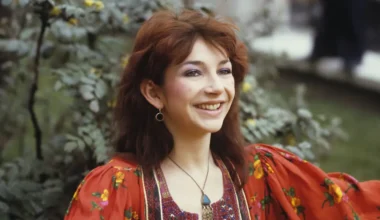Even though gospel and rock music frequently blend, it’s a very hard thing to do well, and even then, the songs don’t always last. However, given that the majority of his career has been devoted to infusing rock ‘n’ roll with gospel sensibilities and themes of spirituality and religion, Mick Jagger of the Rolling Stones has always been the exception.
The Beatles brought a fresh kind of innovation to the rock ‘n’ roll scene in the 1960s. They achieved this by fusing production and technological developments with the band’s innate inventiveness. The Rolling Stones, however, made sure the genre kept its rougher, less polished edge. Rock can transmute beyond a well-curated collection of associated attributes.
Gospel undoubtedly had a significant influence on the Stones’ enormous evolution during the 1970s. Especially for Jagger, who collaborated with Keith Richards to blend the genre into their well-known sound. Even though the two frequently incorporated traditional gospel elements into their songs, they frequently did so in a more modern way.
Their song “The Last Time” is one instance of this; its chorus is the same as the classic gospel song from the 1950s, “This May Be the Last Time,” performed by the Staple Singers. Richards once defended their choice by pointing out how their version “goes back into the mists of time.” Despite the criticism that it was an obvious rip-off. They used similar influences in their music at other times as well, and it extended far beyond Jagger’s time with the Stones.
“If it’s part of your life, then it should be part of your expression,” he famously remarked.
Gospel music developed into a significant part of his solo work even during that period. It improved his rock ‘n’ roll style by raising the sound in a way that only gospel music’s expressiveness could. For example, “Joy,” from his fourth solo album Goddess in the Doorway, was the ideal fusion of rock and gospel. It featured three professionals who might be the only ones qualified for the role.
With Pete Townsend on guitar and Bono providing backing vocals, “Joy” turned into the ideal tribute. It celebrated the generic eclecticism made possible by the fusion of rock and gospel. It’s precisely this fact that led Jagger to Bono. Not only as a musical partner but as someone who could deliver the song exactly the way it was written. When Goddess in the Doorway was released in 2001, Jagger told Paul Du Noyer, “That’s why I thought of him to be on it.”
Jagger actually “thought this could be something [Bono] could do well” when he wrote the song. The U2 singer “took it on very quickly,” confirming his suspicion. In response to a question about Townsend’s inclusion, Jagger remarked. They were able to create “Joy” in a way that blended gospel and rock “without being beholden to a gospel form”. This was because of their shared spiritual inspiration.
He acknowledged that he had never written a song that was exclusively gospel. However, he claimed that the genre has always naturally inspired him. The further development of his rock music style incorporates many charming layers. Each layer possesses just the right amount of passion to bring his ideas to life.








